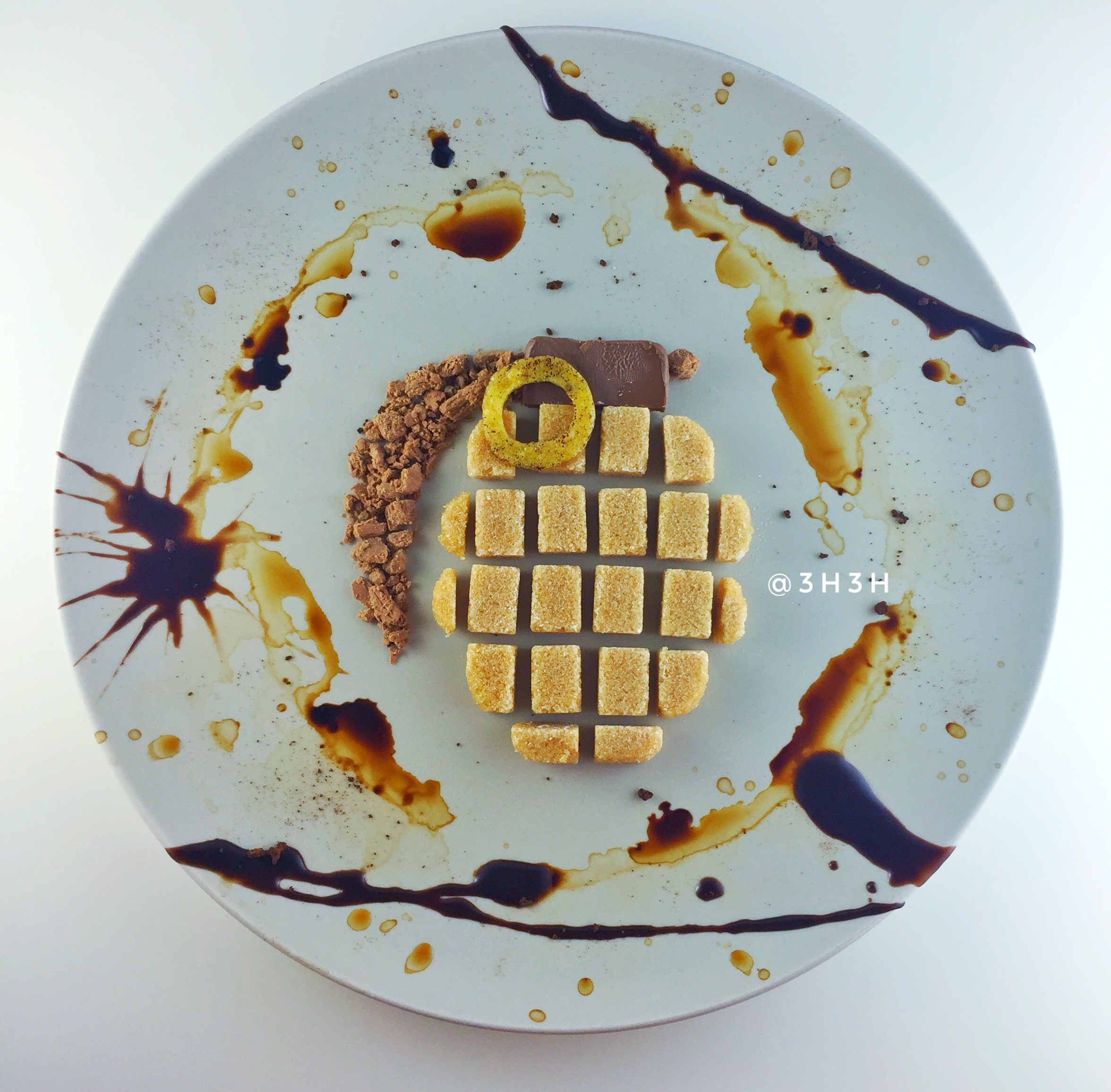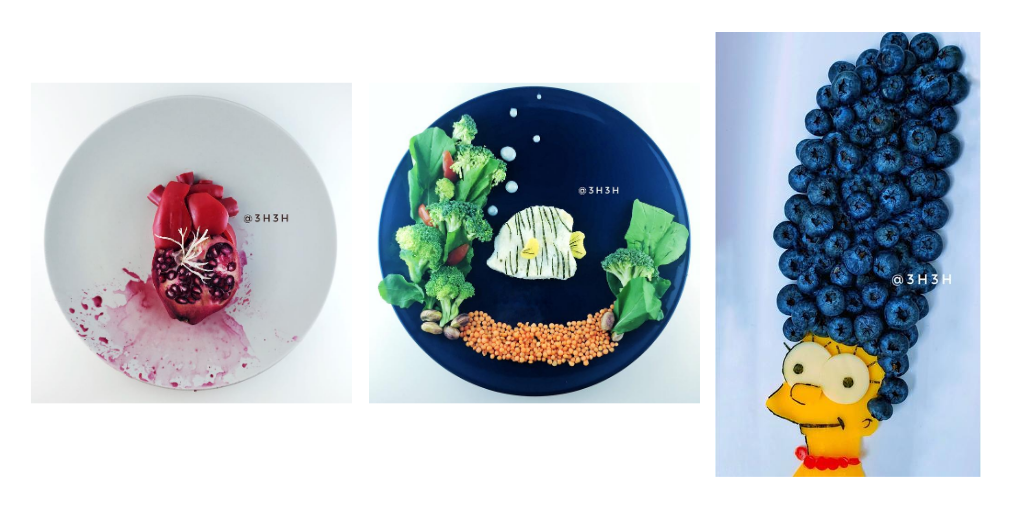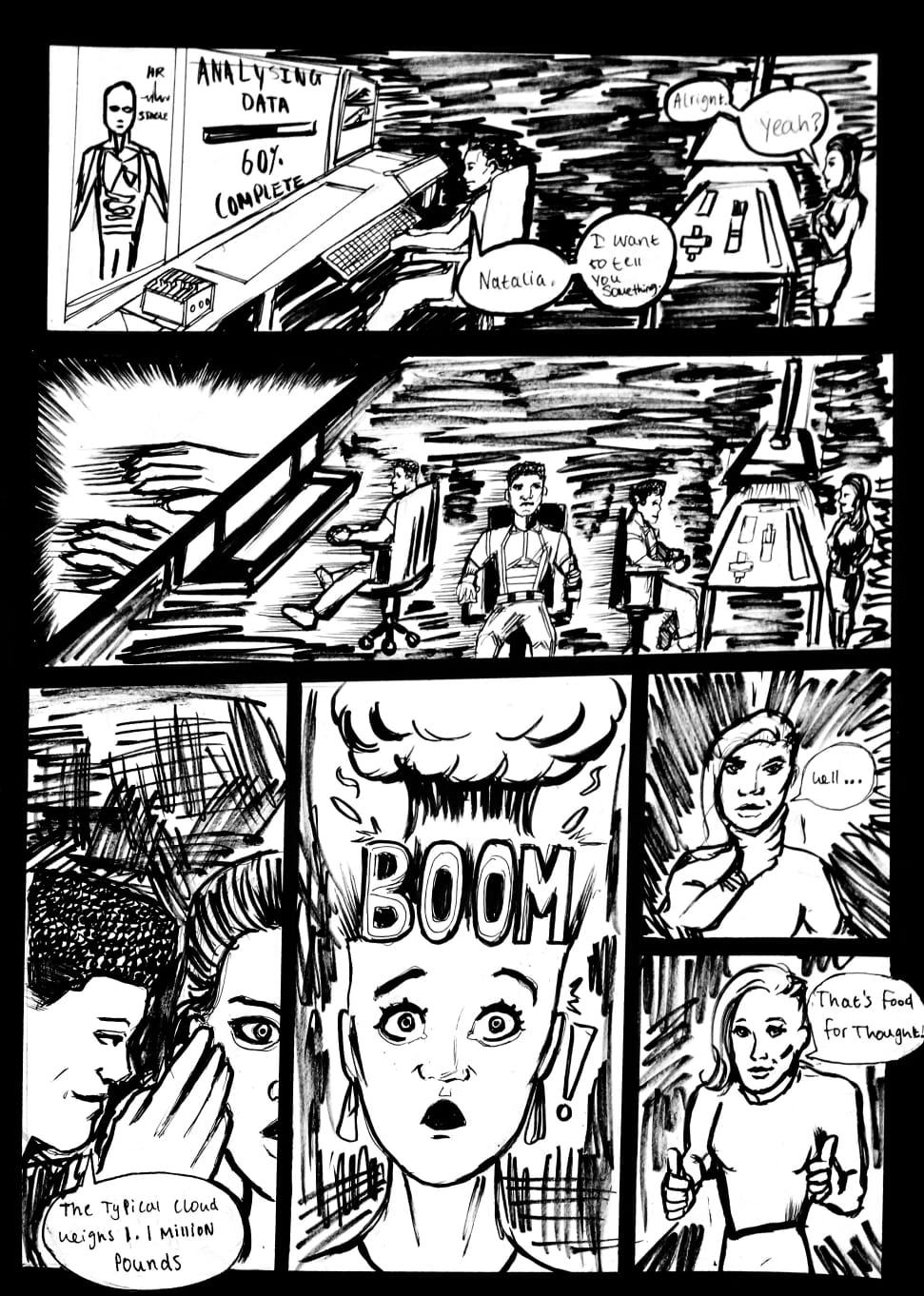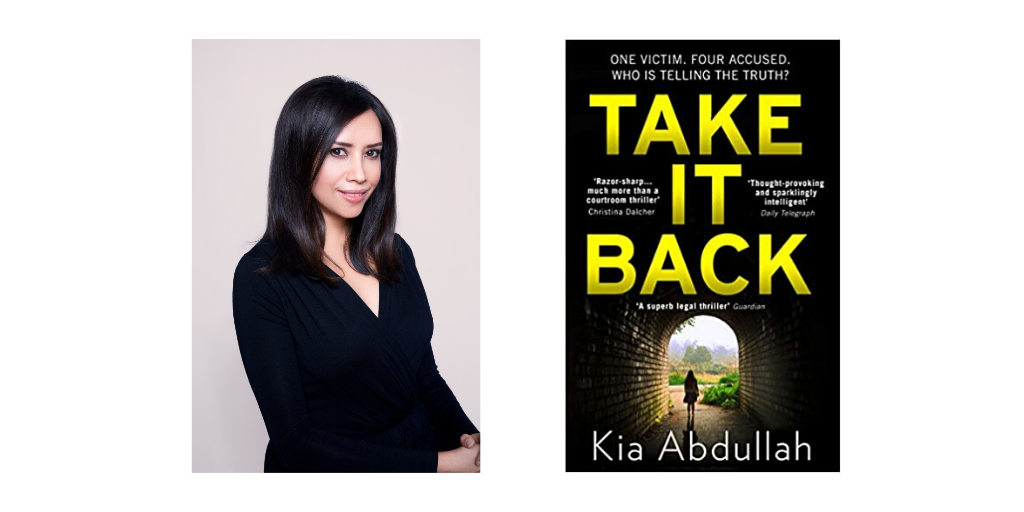Introduced by Holly King

Food, glorious food. The first thing that comes to mind from our theme ‘Food For Thought’ is my dad. The poster boy for chewing properly and eating slowly, he is always the last to finish his dinner. But he also seems to enjoy it the most, taking a mouthful and placing his knife and fork on the outsides of his plate, sitting back and savouring the food, pausing before beginning the next bite. The other memory is of a friend I lived with who could buy a packet of biscuits and only eat one before putting the pack back. Yes, I couldn’t believe it either. Yet, apparently, there are people out there who don’t eat the entire tub of ice cream and who adhere to the recommended serving suggestion.
Four years ago, I cut down on my carbohydrate intake to help manage my type one diabetes (t1d). Immediately, I became aware of the food culture that envelopes our work, social circles and family. I couldn’t go into the kitchen at work without being confronted with doughnuts, cake or leftovers. Once I started looking at the ingredients lists, because I had to make sure there wasn’t any sugar or starch, I found that it was in everything. Meat has it, ‘plain’ yoghurt has sugar added to it. Anything packaged has wheat, rice, potato, sugar, maltodextrin (read: sugar), coconut blossom (read: sugar), saccharin (read: sugar) or tapioca starch in it. There are some exceptions, but they’re few and expensive.
Because of my t1d, I have a different relationship with food to many people. I have to think about what I’m eating (how much and what type of food I need to inject for), when I’m eating it (how far in advance I need to inject), and sugar=sugar to blood glucose; it doesn’t matter if it’s ‘natural’ or ‘unrefined’. I’ve been caught out in restaurants when they’ve accidentally given me a full-sugar Coke or a Thai Green Curry has had sugar added to it. Subsequently, I’ve felt my blood sugar level spike. I’ve also found, through describing my intolerances to servers, that few people understand what macro a food is (Protein, Carbohydrate or Fat), or what ingredients constitute ‘as a carbohydrate’ or sugar. When I said I didn’t want the bun on my burger because of the carbohydrates, the person offered me more chips!
I respect everyone’s choice to eat how they choose, but there is more than a moral or diet implication if I eat something unexpected – there is a clear and instant medical repercussion, which affects my health.
So, for my page this week, we’re going to focus on the medical side of food and, to balance it out, throw in some fantastic artistry and good food stories.
*****
First, Eithne Cullen reflects on her ‘sweet’ upbringing:
War On Sugar! Or, How Refined Can You Get?
I don’t know when the war on sugar began, but I think Jamie Oliver may have been involved. Whoever it was, the war on sugar has become the main weapon talked about in the fight against obesity.
It’s easy to look at the current health concerns critically, but some of us grew up in a positively sugar-coated world.
Take me, for example. As a child, I woke to a sweet breakfast of delicious porridge with sugar melting across the top, like a layer of frosting glittering in the heat. Or I might have had cereal: cornflakes liberally showered with sugar, or a cereal which came already sweetened, like Sugar Puffs (who remembers the advertising with the Honey Monster: “Tell ’em about the honey Mummy”?). We’d be given tea, with sugar, from an early age. I remember a neighbour giving her baby a bottle of tea. I never understood why. I know so many young people, now, who never developed the taste for tea or coffee.
My friend tells me she had sugar sandwiches. I wonder what that gritty treat was like? We had banana sandwiches, though, and mashed the banana with sugar, as though it wasn’t sweet enough already!
We ate sweets (though I rationed them for my own children), chewing on fruity chews and those awful lollipops you’d have to crunch to finish.
School dinners and home dinners almost always had a pudding (afters!) and we consumed Instant Whip, Angel Delight and other commercially-sweetened desserts. We had sweet, sweet custard on our cake and jam tarts and milk puddings (which were supposed to be good for us), like semolina and rice, were also highly sweetened.
We’re the generation who could be divided into those with a sweet tooth or not. And who can blame us? I wonder if this liberal use of sugar was connected with post-war and post-rationing delight. Sugar was rationed until 1953, and many were pleased to welcome it back. Maybe they went a bit mad.
Luckily, parenting and food choices are much more informed these days and everyone knows the dangers of eating too much refined sugar. Things have changed.
Oh yes, and we’re the generation with all the fillings. Our dentists filled our mouths with dark amalgam fillings and tried to keep the damage at bay – for a while, at least.
No wonder so many of us nowadays will pass the sugar!
Connect with Eithne on Twitter: @eithne_cullen
*****
Sweet Solutions
Our next feature is from Jolie, a type one diabetic since childhood. She shares the frustrations she has faced, and what she’s done to improve her lot. Her efforts haven’t just changed her life for the better, for have also helped many others (like me!) who felt left out also:
“Having had strict dietary requirements from a young age and learning about nutrition, I’ve been disappointed every time I heard of a sugar-free treat that was actually infested with fructose, honey or other carbs that would become glucose in the body, just as sugar would! Even low carb, high protein drinks/balls came with serious lies! Real low-sugar deserts existed, but were rare and overpriced. The taste was compromised but the craving and scarcity made them the most delicious option available!
So, I decided if I wanted to enjoy a desert, I needed to make it and took a family recipe and revolutionised it! After many trials my first low carb cake was born. But, I wanted my lactose intolerant, protein-loving husband and vegan friends to enjoy it with me. I therefore kept tweaking the recipe, making sure it was first vegan, then coeliac – because of my cousin. Eventually, I’d reached the point where I was happy. My friends without specific dietary requirements, still needed convincing, though. Luckily, I did get there in the end!”
Clearly, more than Jolie’s friends and family approved, because I met her after searching for just that; an inclusive bakery where the doughnut or cupcake wouldn’t impact my blood sugar levels or offend my taste buds. I’ve ordered pretty much every item Yummzy (her business) has to offer for special occasions such as Christmas, my birthday, even afternoon tea with my vegan friend. I have a few friends with dietary requirements – some the polar opposite of mine – and it makes eating together quite difficult. But bringing a box of Jolie’s desserts has become my solution. Until I wasn’t able to join in with everyone else, I didn’t realise how important food was from a social aspect. Even though I’m trying to make a healthy choice, it can still create an unease in the room. Being able to have a treat while knowing exactly what ingredients are in what I’m eating really has made a difference.
You can connect with Jolie through her Website: yummzyuk.com or Twitter: @yummzy_desserts
*****
Food Decisions
Next, we have Write On! team member Michelle Sutton explaining the complexity of her food decisions:
Have you ever called someone a picky eater? Ever found yourself rolling your eyes at someone in your group who can’t eat at particular restaurants, checks ingredients or asks their order to be plain? Have an awkward friend who politely refuses everything but bread or water at a party? Or a wedding guest who can’t eat any of the sit-down meal, despite it being ‘normal’ food?
Try being that person.
All my life, I’ve been called a picky eater. Whether to my face, by family and friends, or via an exasperated or bemused look from a server when I ask for, “Just plain chicken, please”. I’ve forced food down until I’m about to throw up to avoid being a problem; the person who ruins a night out. It’s mortifying.
There are two main foods I avoid due to allergies/intolerances: lemons and onions. The former is an allergy that has gradually worsened over the years. Even the smell of a freshly-squeezed fruit can irritate my nose or cause my throat to constrict slightly. I once sipped a Coke that briefly had a lemon slice in it and my lips went tingly and numb.
These (and no red meat or alcohol) are easy to provide in the ‘special dietary requirements’ section on a form. But how do you explain more complex stuff?
As a toddler, I had whooping cough. Before, I ate most things, but while ill (and for a time after), I had to be ‘re-weaned’ and put on a bland diet due to the high risk of choking if something made me cough. This resulted in my gut not developing properly.
In simple terms, it means I have a ‘sensitive stomach’. Certain foods are a complete no-go and make me sick. Others vary. Even food I normally eat may cause issues if they’re a different brand, cooked differently, or contain an ingredient I don’t already know is a ‘no’. Take potatoes: I eat a lot, in many forms, but at my cousin’s wedding my mum stopped me eating the roasts because I was ‘going green’. For some reason, my stomach decided it didn’t like those particular ones and I still don’t know why — they tasted fine! I also forget some foods are nos. Viennese Whirls get me every time. I remember they’re very tasty but forget — until I feel nauseous — the cream sets me off.
To add to the complexity, I also get migraines.
Every migraine sufferer is different and must learn their triggers. This usually involves keeping a food diary. For me, coffee (including the smell) and artificial sweeteners are the biggest triggers. I’m currently trying to confirm whether orange juice is another. Alcohol is probably one, but as I don’t drink anyway, I tend not to include it — unless answering the annoying question “Why don’t you drink?”. Thankfully, dark chocolate isn’t one, so I can gleefully munch on 90% cocoa buttons.
Whether due to medical conditions, allergies, intolerances or not liking the taste/texture, food is complex for many people. If you can eat without worrying about any of these, great, but maybe just think about that awkward friend who struggles and try not to make them feel more uncomfortable than they already are.
Connect with Michelle at: l.m.towton@gmail.com, Twitter: LM_Towton and on her blog: lmtowton.wordpress.com
*****
Food Art
Next is artist Ohood Alhamid, whose photo Sugar Kills (below) really packs a visual punch. What a beautiful plate!

When asked about her art, Ohood told me:
I’m a Saudi food artist who is passionate about turning food into works of art. Generally, I love drawing and found myself creating cartoon characters from the dish ingredients before cooking it. The idea of telling stories where the plate is the book of my story is very interesting to me. Thereafter, I started to practice transforming ordinary ingredients into a beautiful creation that help to send a message and encourage kids to eat healthier.
I consider drawing by food more fun than ‘normal’ drawing. However, although it can be challenging to use fresh and natural ingredients as tools, it allows unlimited creativity and innovation. Creating food art involves planning and sketching the idea of the artwork prior to turning the ingredients into a plated food art. This can take several hours.
However, the enjoyment and results are totally worth it. Lately, I have tried to expand my food art, to combine it with food packaging, kids’ stories and so transforming it into delicious snacks. Also, I’m working with some restaurants to showcase their food with creative ideas to reach audiences in an enjoyable way.

You can view more of Ohood’s delicious art on Instagram: @3h3h and Twitter: @3h3h
*****
And Finally…
We round off this week with a comic by Emmanuel Oreyeni.

Connect with Oreyeni on Instagram: @oreyeni.arts, Twitter: @artsoreyeni and follow him on YouTube: Oreyeni Arts
Learn to draw sessions every Monday at 5pm on Zoom: https://zoom.us/j/516550777
Don’t forget, Issue 5 of Write On! magazine is available to read online, just click here.



